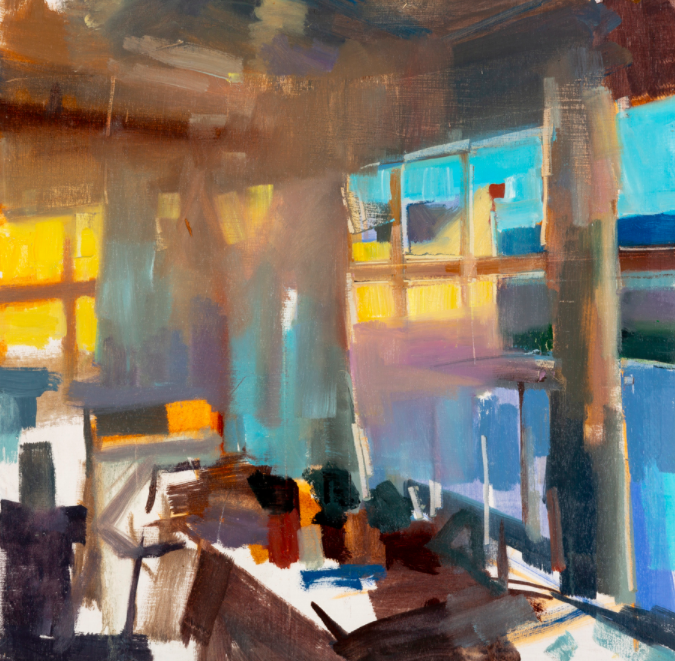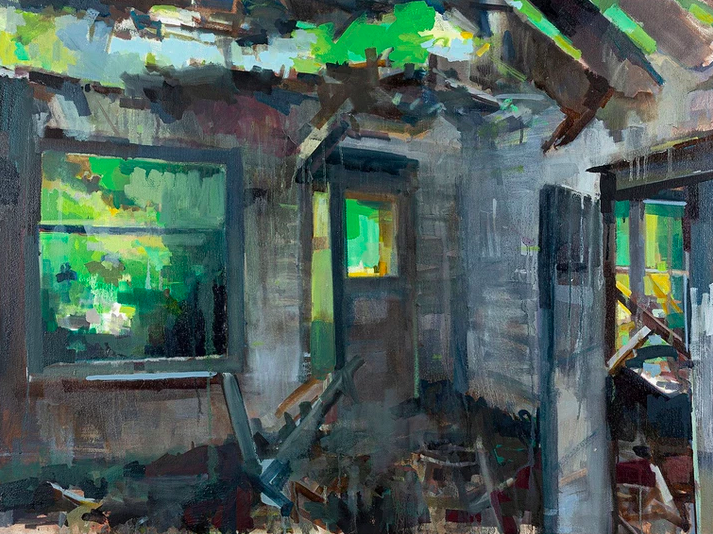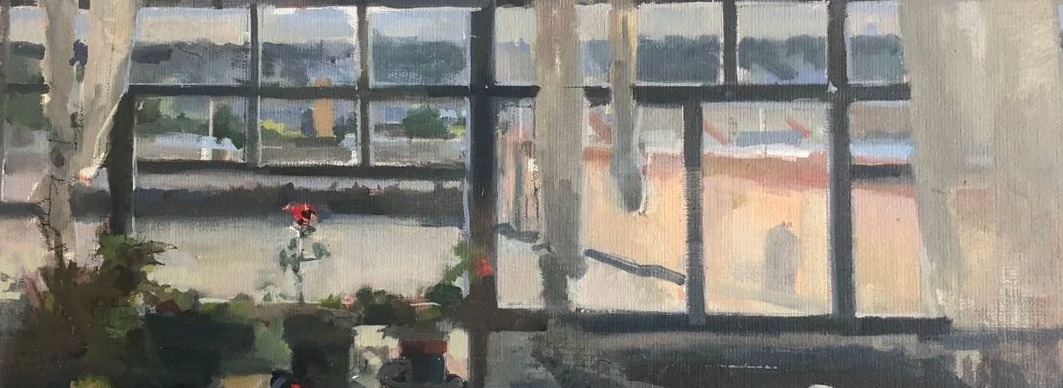“I make art for the fact that words are rarely enough,” said Bay Area painter Gage Opdenbrouw. The artist is an observer of the world around him, capturing the fleeting beauty and radiance of an ordinary moment in time and place.
Opdenbrouw grew up in San Jose, the son of a mechanical engineer from Poughkeepsie and a farmer’s daughter from Nebraska. As a teenager, needing to find a language and a space to express himself, he became dedicated to making art. He moved to San Francisco in 1996, earning his BFA at the Academy of Art College, and has lived in Oakland since 2011.
His days begin before dawn with strong coffee, followed by yoga and meditation in his studio. “First thing, I look at all the paintings I’m working on, look at the sky, observe the light and get to work,” Opdenbrouw said. He works until three or four in the afternoon, then takes his dog for a hike in Oakland’s Redwood Regional Park.

Opdenbrouw has a love for the natural world, and is deeply affected by ongoing global events. “Our times are absolutely tragic and I’m heartbroken and furious at all of it—the careless violence of such a rich society, the absolute lack of humanity in our culture,” he said. “It’s reflected in our attitude toward the earth and the other beings we share it with, reflected in the cruelty toward certain groups of people.”
His work is focused on providing a meaningful antidote to all of the inequity and unrest.
“Joy and beauty are meant to sustain us through all the suffering and I try to focus on finding the poetry in the everyday to that end,” he said. For Opdenbrouw, there is ease in the visual world, a resonance in being able to be receptive to and record what he defines as “simple shapes, a chord of color, a visual rhythm.” This, above all, is what motivates his work. Often turning to poetry to express his thoughts, Opdenbrouw references a quote from Mary Oliver, “Attention is the beginning of devotion.”
Opdenbrouw’s process is comprised by different thematic veins, and he develops dozens of works at once in oils on paper, panel, linen, and canvas. Two recent series, “Windows” and “Midsummer Sun in Empty Rooms,” both convey a feeling of isolation, of being on the inside looking out—a sentiment felt broadly in this time. “Garland of Hours,” a series of faceless figure portraits painted in a fluid blur of disintegrating muted tones, is suggestive, too, of our present crises; of our anonymity and the feeling of time being held in freeze-frame.

Working from photographs, Opdenbrouw captures an ethereal quality in his figures, as the viewer witnesses a kind of dissolution taking place that invokes our shared desire and effort to hold on to all that we love—that which may be missing, slipping away, or forever gone in this lifetime. The artist describes his paintings as meditations on family, memory and forgetting, place and time, light and shadow, love and loss, and ultimately, our inevitable mortality and the transitory nature of all things.
Opdenbrouw is presently looking for a new home for his studio amidst ongoing struggles with the new landlords who bought his building in 2017. The conflict stirs strong feelings in the artist. He feels a wave of economic brutality and cultural homogenization is grinding things down in the Bay Area. Yet still he paints. Returning to the sanctuary of his light-filled studio, which has also been a subject for a series of paintings, he finds silence far from the maddening chaos of the urban world just outside his door. As viewers, we too gain purchase on this eerily familiar, yet sacred ground.
Opdenbrouw has participated in numerous solo and group exhibitions across the country, has received awards in juried shows and painted in residencies. Recent exhibition “Silent Music”at the Washington Studio School in Washington, DC in January was followed by “Midsummer Sun in an Empty Room” at SHOH Gallery in Berkeley. He is also a teacher and frequent art lecturer.
Whether painting interiors, a portrait, or landscape, Opdenbrouw creates work that is “slow, quiet, modest in its aims and focused on human experience.” He calls it his soul food. It is in this endeavor that he finds a restoration of balance in an unbalanced world. Opdenbrouw turns again to the poetics of another creative thinker by quoting Henry Miller; “To paint is to love again.”


